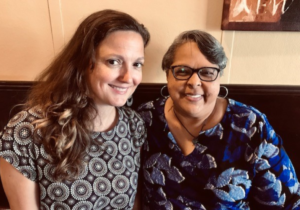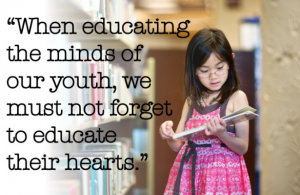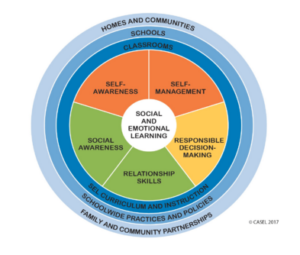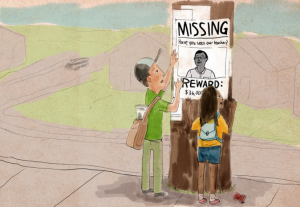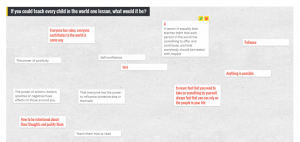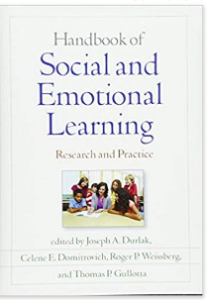Build Relationships
Does your face light up when that child walks into the room? Toni Morrison
Some loves never die. Shout out to my second grade teacher and former colleague Mrs. Angela Rattler, whose face always lit up for each and every one of us.
According to CASEL, Collaborative for Academic, “Social and emotional learning (SEL) is the process through which children and adults acquire and effectively apply the knowledge, attitudes, and skills necessary to understand and manage emotions, set and achieve positive goals, feel and show empathy for others, establish and maintain positive relationships, and make responsible decisions.” There are five components of Social and Emotional Learning: Self Awareness, Self-Management, Social Awareness, Relationship Skills, and Responsible Decision-Making and multiple stakeholders.
On this page, you will find articles, websites, and ways in which you can integrate SEL into your classes.
RESOURCES
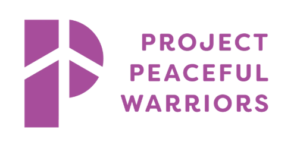 Click PPW’s logo for more information about yoga and mindfulness workshops for teachers.
Click PPW’s logo for more information about yoga and mindfulness workshops for teachers.
Articles/ Studies
Learning Soft Skills in Childhood Can Prevent Harder Problems Later
Ready to be Counted: The Research Case for Education Policy Action on Non-Cognitive Skills
The Prosocial Classroom: Teacher Social Emotional Competence in Relation to Student and Teacher Outcomes (Jennings & Greenberg, 2009).
“…[R]esearch shows that 40-50 percent of teachers will leave the classroom within their first five years. Stress among teachers has reached unprecedented levels, and according to the latest MetLife Survey of the American Teacher (PDF), over half of teachers reported “great stress at least several days a week.” Teaching is an emotional practice, and teachers need support in strengthening their social and emotional skills to manage the stress that comes with teaching and stay in the profession for the long term.”
Click to read the entire Edutopia article: Developing Teachers’ Social and Emotional Skills
Frustration. Burnout. Attrition. It’s Time to Address the National Teacher Shortage
Websites
Collaborative for Academic, Social, and Emotional Learning (CASEL)
If You Could Teach Every Child in the World One Lesson… by Dr. Brooke Grant
Secondary Methods I is a course designed for students that are currently teaching or wish to teach at the secondary level. The course focuses on prominent methodological issues and the development of core teaching skills. On the very first day of class, I asked my students, “If you could teach every child in the world one lesson, what would it be?” Students responded on the site Padlet, a digital bulletin board that lets students post anonymously, but for all to see instantly. In the above picture, you may be able to see some of their responses to this question, including, “How to be intentional about their thoughts and justify them”; “Actions have effect on the around you.”; “Everyone has the power to influence someone else or themselves.”; “The power of positivity”, and “Everyone has value, everyone contributes to the world in some way.” This prompt was meant to be an introduction to social and emotional learning, but also a reminder of what is really essential. Secondary teachers often get caught up in their content material, which is important. But I reminded them not to lose sight of what they really think all children deserve to know.
BOOK CLUB
SEL Golden Nuggets from Handbook of Social and Emotional Learning:
From Dr. Blady:
Chapter 2
The adults in our SEL community are responsible for modeling emotional skills and positive social behaviors, as well as implementing and supporting programming. This reminds me that we need to first provide the necessary support for the teachers (mindfulness, wellness, open-communication, etc).
Six principles for adult learning (p.24); Malcolm Knowles mentioned. Use this for our own workshops, classes.
Have to monitor impact of an SEL program.
Chapter 3
We want all students to ‘catch character’ from those around them, but they need explicit, repeated instruction on how to recognize, understand, label, express, and regulate (RULER) their feelings.
Something for us to consider: Does the growing proliferation of mobile technology offer new possibilities for teaching and learning SEL?
Chapter 27 SEL and Preservice Teacher Ed
According to the National Commission on Teaching and America’s Future (2007), teacher turnover costs the U.S. up to $7 billion annually and occurs mostly at low-performing, high-poverty, high-minority schools.
-SEL is definitely embedded in Classroom Management.
Let’s review our syllabi from this lens. More SEL-based points in required service learning reflections.
MUST see: http://www.sel4ma.org/ so many resources and ideas for us to use for Louisiana.
Ideas for start of year: http://www.edutopia.org/blog/social-emotional-learning-tips-school-starts
